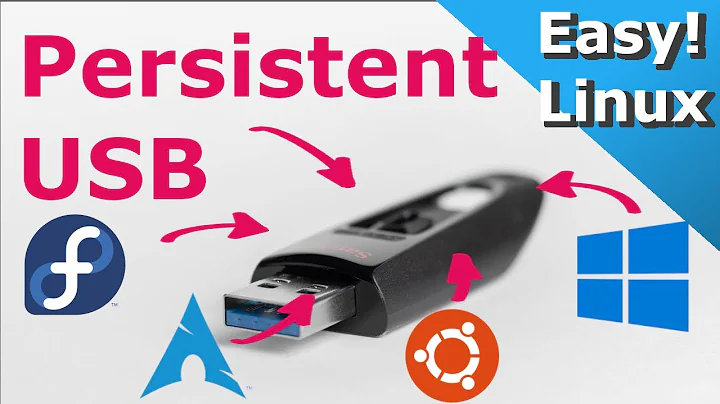Difference between LiveCD, LiveUSB, full-install, and persistence?
Solution 1
Live with persistence:
You have the portability of live media with a home-folder and possibly other temp storage
Live without:
Portability but no saved anything
LiveUSB with persistence:
Less life out of the USB(a bunch more reads), but very similar to 1
LiveUSB without persistence:
Less life out of the USB(a bunch more reads), but very similar to 2
Full install:
Obviously, a full install to the USB would translate to shorter life since it would drastically increase the number of reads and writes.
Solution 2
Advantages of a persistent install:
1) You can use the persistent pendrive to install Ubuntu to another computer.
2) A persistent install takes up less space on the pendrive.
3) You can reset the pendrive by overwriting the old casper-rw file with a new one.
4) The install to pendrive takes less time.
Advantages of a Full install:
1) You can update and upgrade.
2) If you have problems or wish to modify, the solution is the same as with an internal install, (You can ask for help in these forums).
3) No ugly startup / install screen.
4) Better security, you can encrypt home folder.
5) You can use proprietary drivers.
6) Hibernation works.
7) A persistent install is limited to a 4GB casper-rw and a 4GB home-rw persistence file, to get more persistence requires persistence partitions.
8) Faster boot.
Note that once booted, both methods run at about the same speed.
Related videos on Youtube
Jay
Updated on September 18, 2022Comments
-
Jay over 1 year
I am currently running Ubuntu as a guest vm on a Win 7 host via VirtualBox, but I would like to have a portable version of Ubuntu when I am not using my laptop.
I am unsure as to the difference between the following:
1)LiveCD with persistence; 2)LiveCD without persistence; 3)LiveUSB with persistence; 4)LiveUSB without persistence; 5)Full-install.
I have a USB flash drive (32GB), and I also have empty DVDs lying around. I know that persistence means that data can be saved, but I am unsure as to which option to choose. What is the difference between a LiveUSB and a full-install on a USB thumbdrive and why would I want to pick one over the other? Thanks for any help.
-
jgomo3 about 11 yearsI asked a similar question and had an awesome answer: askubuntu.com/a/295776/10580
-
-
Jay almost 12 yearsOk, so if I do a full install on a USB flash drive, does that translate to a longer life for the USB drive than if I use the OS live from the USB? That aside, why would I want to have a LiveUSB as opposed to doing a full install on the USB, if I am planning on routinely using Linux via the USB drive?
-
AJMansfield over 10 yearsSo, what makes a persistent live boot different from just putting your data on the USB stick, using the space not taken up by the boot image? If you create a separate partition on the disk and configure the fstab so it mounts it to
/home, how would that be different? -
 Meninx - メネンックス over 10 yearsWith a persistent stick you can install more programs, not so easy to do in FAT space.
Meninx - メネンックス over 10 yearsWith a persistent stick you can install more programs, not so easy to do in FAT space. -
 Meninx - メネンックス over 10 yearsPerhaps you could use fstab to bind additional folders to home, see superuser.com/questions/429901/…
Meninx - メネンックス over 10 yearsPerhaps you could use fstab to bind additional folders to home, see superuser.com/questions/429901/… -
jiggunjer over 8 yearsWhy is the persistent version smaller? Does it lack functionality or there compression?
-
 Meninx - メネンックス over 7 years@jiggunjer A persistent syslinux style persistent drive uses a high speed compressed SquashFS, en.wikipedia.org/wiki/SquashFS
Meninx - メネンックス over 7 years@jiggunjer A persistent syslinux style persistent drive uses a high speed compressed SquashFS, en.wikipedia.org/wiki/SquashFS -
 Meninx - メネンックス over 7 yearsFlash drive life running Ubuntu - askubuntu.com/questions/588035/…
Meninx - メネンックス over 7 yearsFlash drive life running Ubuntu - askubuntu.com/questions/588035/… -
 Meninx - メネンックス over 7 yearsReads do not wear out a pendrive, writes do, but not so you would notice.
Meninx - メネンックス over 7 yearsReads do not wear out a pendrive, writes do, but not so you would notice.




